 One of the fascinating things in watching this season of Kekkai Sensen is looking for signs of a stylistic change from director Matsumoto Rie to Takayanagi Shigeto. That could easily become something obsessive if one weren’t careful, but I think I certain focus on it is natural – after all, Blood Blockade Battlefront is a series that was pretty much defined by its visual style. The premiere was remarkably seamless in picking up the story on the whole, and the evidence is there that Takayanagi is wisely going to emphasize continuity over personal vision. But he’s a human being and a director, and he’s obviously going to have an influence on the project.
One of the fascinating things in watching this season of Kekkai Sensen is looking for signs of a stylistic change from director Matsumoto Rie to Takayanagi Shigeto. That could easily become something obsessive if one weren’t careful, but I think I certain focus on it is natural – after all, Blood Blockade Battlefront is a series that was pretty much defined by its visual style. The premiere was remarkably seamless in picking up the story on the whole, and the evidence is there that Takayanagi is wisely going to emphasize continuity over personal vision. But he’s a human being and a director, and he’s obviously going to have an influence on the project.
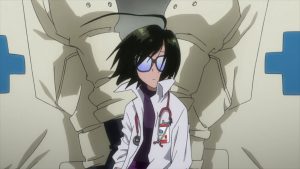 Takayanagi is an interesting choice by Bones, in that the most recent evidence to go on as to his own style is Dagashi Kashi, and it displays qualities that are quite opposite to Matsumoto Rie in many respects. In that series he showed an affection for long, slow panning shots – his way of emphasizing the sense of empty space and slowly passing time in small town Japan. Matsumoto is the queen of quick cuts, and they’ve become emblematic of Kekkai Sensen – and Takayanagi has largely stayed the course (though less so in this episode).
Takayanagi is an interesting choice by Bones, in that the most recent evidence to go on as to his own style is Dagashi Kashi, and it displays qualities that are quite opposite to Matsumoto Rie in many respects. In that series he showed an affection for long, slow panning shots – his way of emphasizing the sense of empty space and slowly passing time in small town Japan. Matsumoto is the queen of quick cuts, and they’ve become emblematic of Kekkai Sensen – and Takayanagi has largely stayed the course (though less so in this episode).
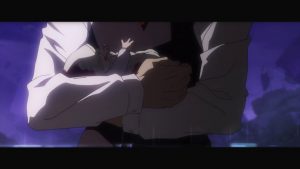 By no means am I an expert on cinematography, but what strikes me is that under Takayanagi’s watch what we’re seeing is a hybrid – Matsumoto’s basic hyperactive template, but with more focus on depth and panorama. Matsumoto’s look is almost animated manga at times (as was FLCL, which clearly influenced her – and even literally used animated manga as a style for one scene), and as such she has a fondness for richly detailed but flat backgrounds flashing by in quick succession. Takayanagi prefers less jerkiness and more flow, and backgrounds that draw you in texturally. He’s asserting it subtly so far, but it’s discernible for sure – and I would say largely effective.
By no means am I an expert on cinematography, but what strikes me is that under Takayanagi’s watch what we’re seeing is a hybrid – Matsumoto’s basic hyperactive template, but with more focus on depth and panorama. Matsumoto’s look is almost animated manga at times (as was FLCL, which clearly influenced her – and even literally used animated manga as a style for one scene), and as such she has a fondness for richly detailed but flat backgrounds flashing by in quick succession. Takayanagi prefers less jerkiness and more flow, and backgrounds that draw you in texturally. He’s asserting it subtly so far, but it’s discernible for sure – and I would say largely effective.
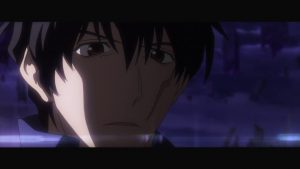 Oh, and there was a story going on this week too – and quite a good one in fact. It’s too early to say if Takayanagi is going to tweak the narrative style of BBB as well as the visuals, but so far the basics look about the same – semi-independent story arcs that fill in the blanks of our knowledge of the overall premise, but only a little. This time the focus is a hospital which mysteriously appears out of nowhere – and conveniently too, as Zapp has just gotten himself nearly killed in a high-speed collision. When Leo (who was with Zapp – we never learn why, or what they were up to) calls in Franz and Steven, they immediately recognize it as the hospital they brought an orphaned baby to during the initial Great Collapse.
Oh, and there was a story going on this week too – and quite a good one in fact. It’s too early to say if Takayanagi is going to tweak the narrative style of BBB as well as the visuals, but so far the basics look about the same – semi-independent story arcs that fill in the blanks of our knowledge of the overall premise, but only a little. This time the focus is a hospital which mysteriously appears out of nowhere – and conveniently too, as Zapp has just gotten himself nearly killed in a high-speed collision. When Leo (who was with Zapp – we never learn why, or what they were up to) calls in Franz and Steven, they immediately recognize it as the hospital they brought an orphaned baby to during the initial Great Collapse.
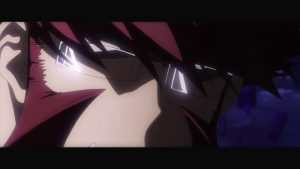 It was interesting flashing back to this time when the “Mist World” first overlapped with New York, wreaking havoc wherever it did. Many victims have taken refuge inside the aforementioned hospital, where an older doctor and a young one named Dr. Estevez (Sakamoto Maaya) desperately triage the flow of patients. When a Blood Breed and his “dog” show up, naturally it’s only Klaus and Steven that can try and stand against him – which they do, in a desperate struggle to survive even as the dog slips past them and into the hospital. Steven grimly recommended that the “rear” be written off, but Klaus says he’ll give Steven 100 seconds to defeat the dog as he holds off the Blood Breed in the meantime. But before their fight can be settled, the hospital slips from our world into Beyond – not to be seen again for three years, until the present day.
It was interesting flashing back to this time when the “Mist World” first overlapped with New York, wreaking havoc wherever it did. Many victims have taken refuge inside the aforementioned hospital, where an older doctor and a young one named Dr. Estevez (Sakamoto Maaya) desperately triage the flow of patients. When a Blood Breed and his “dog” show up, naturally it’s only Klaus and Steven that can try and stand against him – which they do, in a desperate struggle to survive even as the dog slips past them and into the hospital. Steven grimly recommended that the “rear” be written off, but Klaus says he’ll give Steven 100 seconds to defeat the dog as he holds off the Blood Breed in the meantime. But before their fight can be settled, the hospital slips from our world into Beyond – not to be seen again for three years, until the present day.
 This is classic Kekkai Sensen action, effectively indistinguishable from what saw in the first season, and Klaus has some real shining moments. As for the hospital itself, it’s now in the hands of what seems to be a Beyond doctor or benefactor – and a dying Dr. Estevez has surrendered her humanity in exchange the power he grants her to subdivide herself into chibi clones so as to treat more people. Thanks to Leonardo’ eyes being able to see the Blood Breed’s name (Zamedle Lolow Zeaze Nazamsandriga) Klaus defeats it, though it seems as if the patients who were victims of the dog and held in suspended animation may have been lost. As with many S1 eps, the big picture hasn’t overtly changed much, but it was a vastly entertaining diversion.
This is classic Kekkai Sensen action, effectively indistinguishable from what saw in the first season, and Klaus has some real shining moments. As for the hospital itself, it’s now in the hands of what seems to be a Beyond doctor or benefactor – and a dying Dr. Estevez has surrendered her humanity in exchange the power he grants her to subdivide herself into chibi clones so as to treat more people. Thanks to Leonardo’ eyes being able to see the Blood Breed’s name (Zamedle Lolow Zeaze Nazamsandriga) Klaus defeats it, though it seems as if the patients who were victims of the dog and held in suspended animation may have been lost. As with many S1 eps, the big picture hasn’t overtly changed much, but it was a vastly entertaining diversion.
ED: “Step Up Love” (ステップアップLOVE) by DAOKO x Yasuyuki Okamura


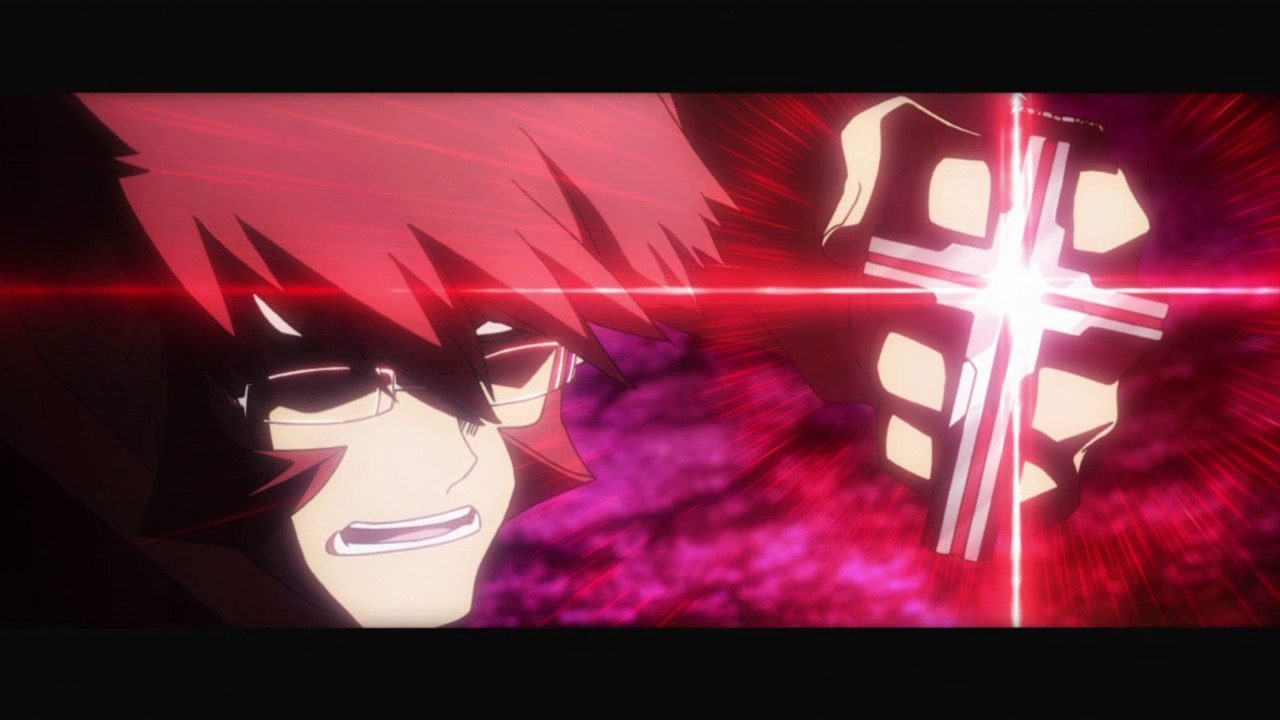
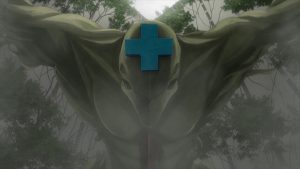

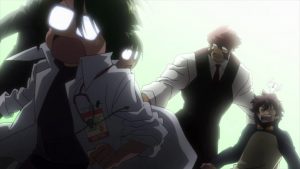
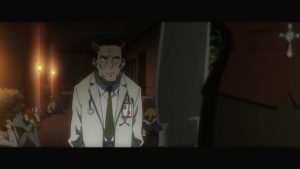

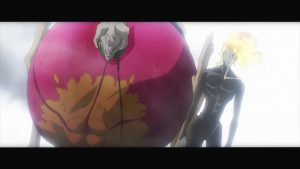


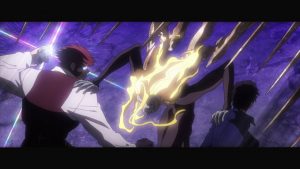

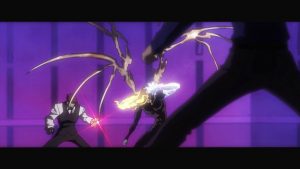
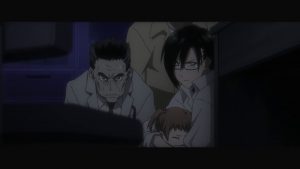
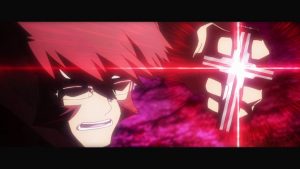
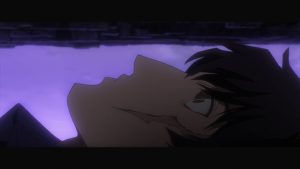
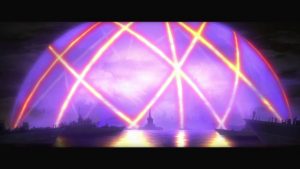
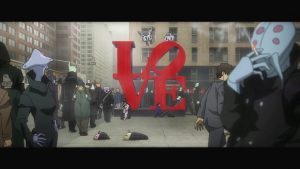
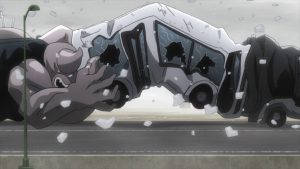
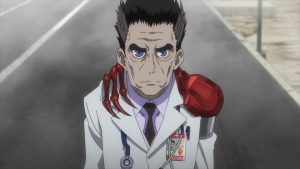
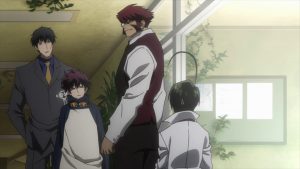
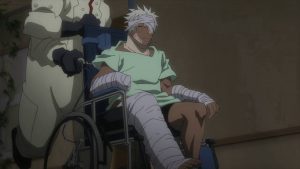
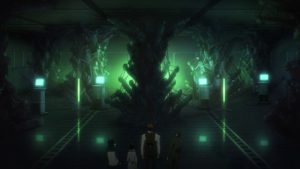
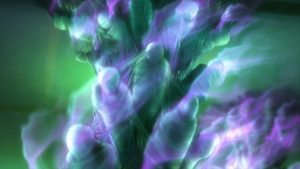
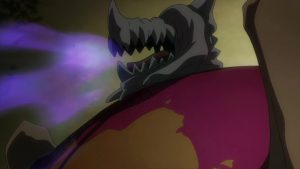
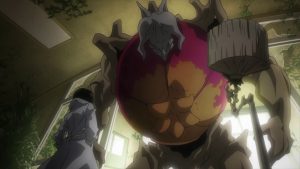
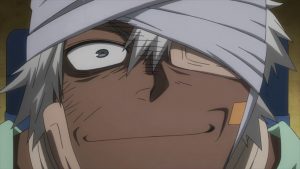
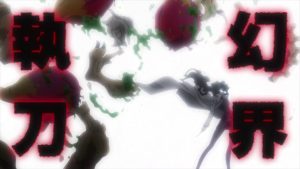
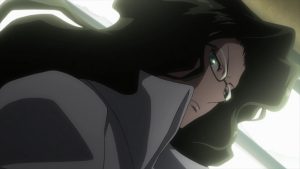
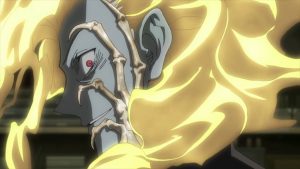
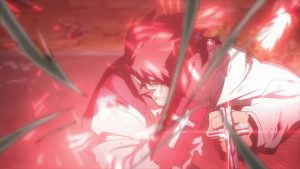

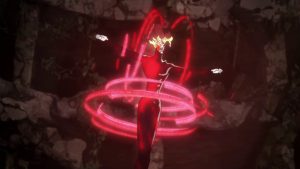
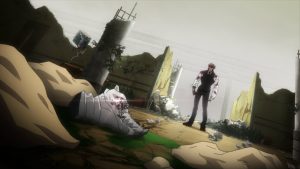
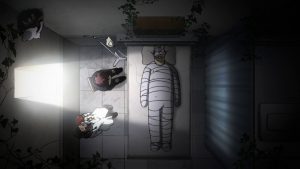
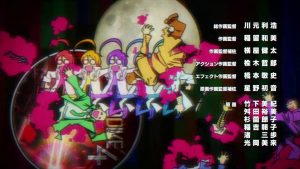
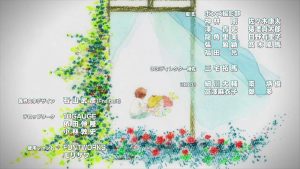
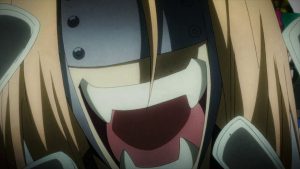
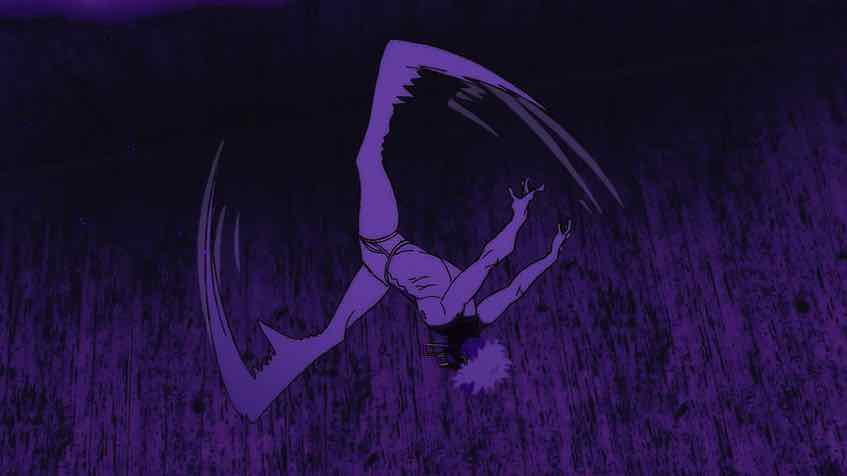
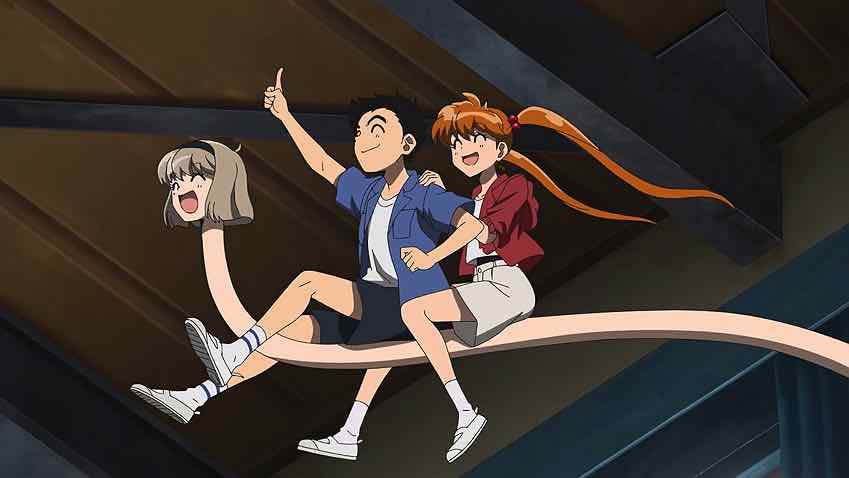
sonicsenryaku
October 14, 2017 at 7:42 pmwell i gotta commend you; for someone who is not expect on cinematography, you definitely picked up on one of the key differences between takayanagi and Matsumoto’s visual direction on this series. It actually wouldnt surprise me if people brought up the argument that Takayanagi’s visual flow is a bit more comprehensive than Matsumoto’s eccentric experimentation with shot perception as i could definitely see why people would feel that way. I know people were worried when they heard Takayanagi was taking the directorial seat but after these first two eps, Im sure the series is in safe hands. This is why i tell people to try not to be too judgmental on a staff member just because of what they have done previously
Guardian Enzo
October 14, 2017 at 8:13 pmi tell people to try not to be too judgmental on a staff member just because of what they have done previously
Which in Takayangi’s case, I like.
I don’t think there’s any question that Takayanagi’s style is much more liquid that Matsumoto’s. It’s not a question of better or worse for me, but the fact that Takayanagi is undoubtedly more “conventional” is going to cause some to wrongly assert that this makes him inferior.
sonicsenryaku
October 14, 2017 at 8:45 pm“but the fact that Takayanagi is undoubtedly more “conventional” is going to cause some to wrongly assert that this makes him inferior.” Yeeeaaaa i could see some making that assertion. For me, what’s always been important is whether the directional influences a staff change brings is good or not; long story short, it is. People will always have their opinions as to which one director is inferior to the other when staff changes are in play (as well as look for those differences) but as long as the staff member presents me quality, i will always be satisfied and takayanagi is definitely bring his brand of personality and quality to the series. Yea he’s trying to stay within matsumoto’s template, but that’s most probably because he loved her vision of the series to begin with and wants nothing but to add to it in his own way while paying respect to what has come before. Streamlining certain aspects of a series for the sake of convention, so as long as it functions effectively with the course of the narrative and maintains an expected quality, will never be perceived as inferior to me; Id just see it as a different approach. At the end of the day though, I guess it’s inevitable that something will have to give and one’s approach is going to edge out the other; only time will tell.